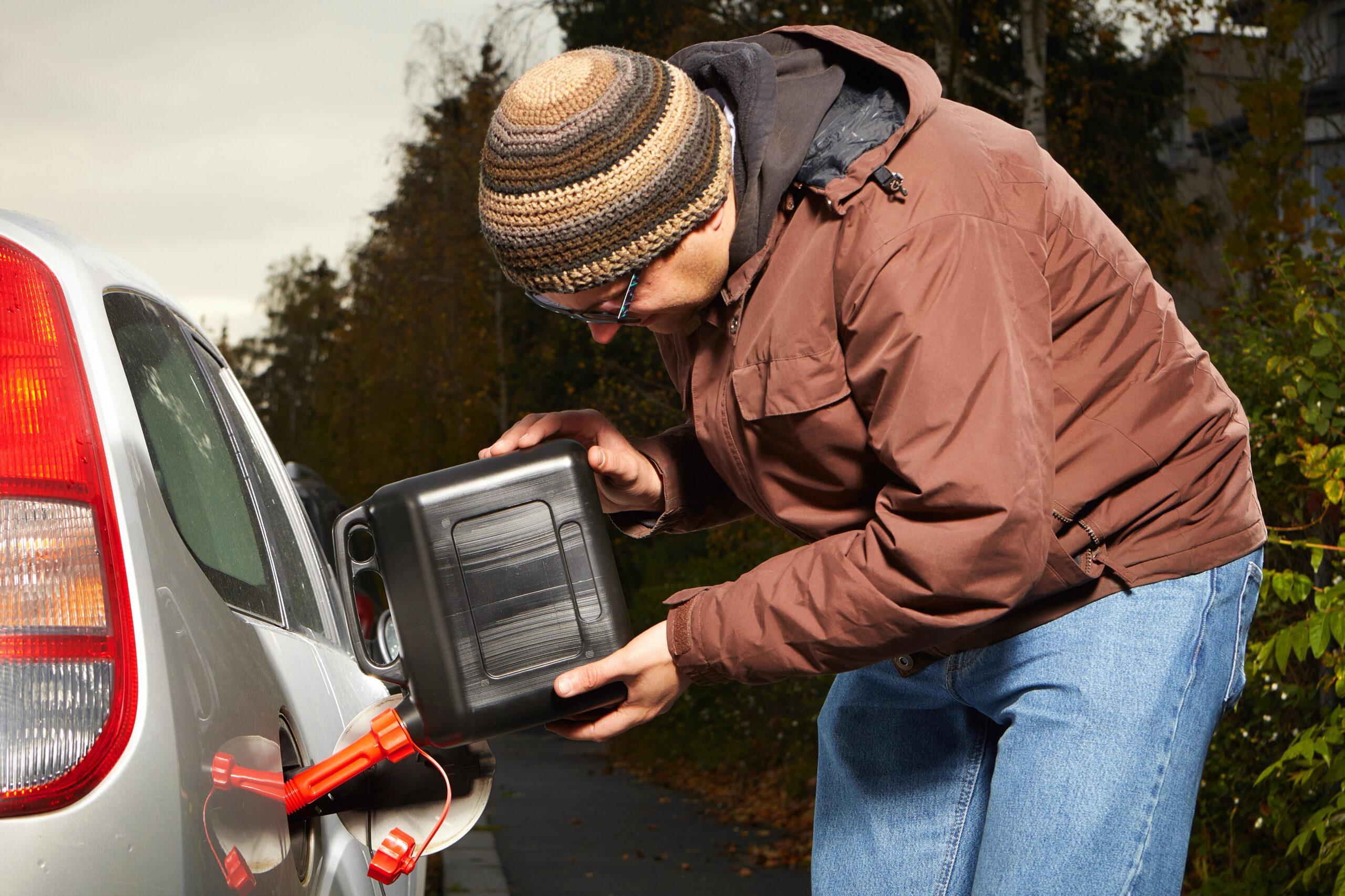Question: How do I restart my car if it runs out of gas?
Answer:
The first step to safely restarting your car after it runs out of gas is to allow the new fuel to get into the car’s system, then prime the fuel system before attempting to start the engine.
To help ensure that you don’t damage your engine during this process, follow these steps:
Step 1: Ensure your safety
Before doing anything, make sure your car is in a safe location. If you’re on a busy road, stay aware of your surroundings and turn on your hazard lights to alert other drivers.
If possible, move the car to the side of the road to avoid any potential accidents. Ideally, you’ll be able to find a level location to park your car, as this can help the fuel pump more effectively draw gas from the tank.
Step 2: Add fuel
Once you’re in a safe location, add as much fuel as possible to your gas tank. While around a gallon may be enough to get your system up and running again in some vehicles, others require more fuel to ensure the pump mechanism can actually reach and circulate the fuel—especially if you can’t find level ground to park on.
Step 3: Turn the ignition to the “On” position
Turn your car’s ignition to the “On” position without starting the engine. This step allows the pump to begin moving fuel from the tank to the engine. Depending on your make and model, you may hear a humming or buzzing noise from the fuel pump as it primes the system.
Step 4: Allow the fuel system to prime
Leaving your vehicle in the “On” position for three to five seconds allows your fuel injectors to pump fuel to where it needs to be. It also helps remove any air that may have entered the lines when you ran out of gas.
Some cars do this automatically when you turn the ignition to the “On” position, while others may require you to turn the key back to the “Off’ position and then back “On” several times. To be on the safe side, we recommend turning your car on, off and back on again at least three or four times before attempting to start the engine.
Pro Tip:Don’t rely on just the fuel system to do the priming. You can press the accelerator a few times to help push fuel through the system. This is especially important if your vehicle does not have a fuel-injected engine.
Step 5: Start the engine
After priming the fuel system, attempt to start the engine. If your car doesn’t start immediately, don’t continuously crank the engine, as this can drain the battery and cause damage. Instead, wait a few seconds and try again. It might take a few attempts before the engine turns over, and the engine may cough a bit, but it should start.
Note:Running out of gas may cause your vehicle to trip the breaker designed to stop fuel flow and prevent fires during car accidents. This is especially true in modern cars. If your car won’t start after running out of gas and refilling the tank, press the fuel pump reset button—check your owner’s manual for its location.
Step 6: Check for warning lights
After the engine starts running, check your dashboard for any warning lights. If you see a check engine light or any other indicators, it’s a good idea to have your car checked by a mechanic to ensure there’s no underlying issue caused by running out of gas.
Step 7: Head to your nearest gas station
Finally, drive to the nearest gas station and fill your tank completely. Running out of gas or consistently keeping your fuel levels low can cause debris from the bottom of your tank to enter the fuel system, which can lead to clogs and other issues. Keeping your tank full helps to avoid these problems.
By following these steps, you can safely restart your car after running out of gas and avoid potential damage to your engine. Remember, it’s always a good practice to keep an eye on your fuel gauge and refill before it gets too low to prevent running out of gas in the first place.

Sarah Gray is an insurance writer with nearly a decade of experience in publishing and writing. Sarah specializes in writing articles that educate car owners and buyers on the full scope of car ownership—from shopping for and buying a new car to scrapping one that’s breathed its last and everything in between. Sarah has authored over 1,500 articles for Jerry on topics ranging from first-time buyer programs to how to get a salvage title for a totaled car. Prior to Jerry, Sarah was a full-time professor of English literature and composition with multiple academic writing publications.

Everett Cook is an award-winning journalist and editor with more than 10 years of experience across a variety of industries. In editing for Jerry, Everett’s mission is to help readers have a better understanding of the costs of owning or leasing a car and to better understand their vehicle in terms of insurance and repairs. Prior to joining Jerry, Everett was an editor for Axios. His previous work has been featured in The New York Times, The Los Angeles Times, The San Francisco Chronicle, The Atlantic, Atlantic Re:think, The Boston Globe, USA Today, and others. He’s also been a freelance writer and editor with experience in SEO, audience building, and long-term content roadmaps. Everett is a proud graduate of the University of Michigan.








